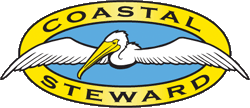Today’s guest blogger is Melissa Aguayo, Heal the Bay’s Speakers Bureau Manager
The New Year is just around the corner, and we all know what that means… New Year’s resolutions.
Some people like to focus on their health while others focus on helping others or even saving money. If only there was an easy way to do all three… oh wait, there is!
Kicking your bottled water habit and switching to tap and a reusable bottle will save you money. Plus, it’s better for the environment and your health! Confused? Keep reading.
Save Money
Bottled water is expensive; it costs anywhere from 240 to 10,000 times more per gallon than tap water. The average tap water in California costs about $1.60 per thousand gallons while the average bottled water costs about $0.90 per gallon-that means you are paying over 560 times more for a product that falls from the sky! In fact, if you look at the price per gallon, you will pay more for single-use bottles than for gasoline. In 2009 Americans spent $10.6 billion on bottled water and almost half of that bottled water came from public tap water supplies. Beverage companies do a great job of marketing bottled water as purer and safer; however this is not necessarily true.
Protect Your Health
Our tap water is safe and highly regulated by the federal government. On the other hand, the Food and Drug Administration has much less stringent rules and only regulates the 30-40% of bottled water sold across state lines. Even then, testing is intermittent and once the water is bottled and stored, it does not have to be tested at all. The Natural Resources Defense Council completed a four-year study where they tested 1,000 bottles of 103 bottled water brands. Among many shocking discoveries, they found several companies buying water from a spring in Massachusetts which was located near a hazardous waste site. The water was contaminated with carcinogenic chemicals. Many plastic bottles also contain phthalates and BPA (Bisphenol A) which are both carcinogenic chemicals and can leach into the water.
Help the Environment
Many bottled water companies take water from local public sources, which harm the environment by depleting groundwater sources which the local community relies on. Once this water is removed it has to be packaged, in plastic. The U.S. alone uses about 17.6 million barrels of oil to produce plastic bottles. That would be enough oil to fuel more than one million vehicles each year. These bottles then have to be transported over hundreds of miles which consumes energy and releases pollutants. At the end of all this we are left with billions of empty bottles of which only 16% are recycled. The other 84% will end up in landfills or littering our streets where they can make their way to our rivers, lakes or oceans through the storm drain system.
So there you have it, three incredibly important reasons to make switching to tap and reusable water bottles this New Year’s resolution. It’s a small change that will go a long way.
Now go return that ugly sweater Aunt Liz gave you and exchange it for a reusable water bottle.



